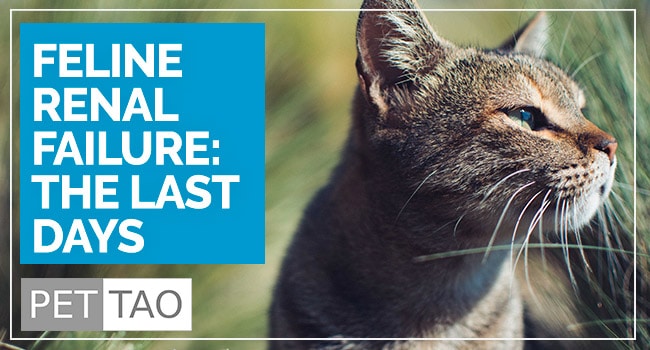Navigating kidney failure in cats’ final stages doesn’t have to break your heart.
However, because chronic renal failure is a progressive disease, the outcome will ultimately be death.
The following five treatments are necessary to manage end-stage renal failure.
1. Subcutaneous Fluid Administration
As renal insufficiency progresses, oral fluid intake cannot keep pace with fluid losses.
Therefore, most cats will benefit from intermittent subcutaneous fluid administration.
Give 100-150cc of balanced electrolyte solution once daily.
The frequency of administration per week depends on the clinical signs shown by the cat.
Sometimes, 200cc every other day is more manageable.
Most dedicated owners can easily administer subcutaneous fluids with a drip set and fluid bag with an 18 or 20 gauge with very few problems or complications.
2. Controlling Anorexia/Nausea/Vomiting
Increased stomach acid accumulation due to reduced clearance associated with chronic progressive renal failure can lead to gastric hyperacidity, gastric irritation, and ulceration.
H-2 receptor blockers such as cimetidine, ranitidine (2-3 mg/kg PO q12h), or famotidine (Pepcid® 1 mg/kg PO q24h) will reduce gastric acid secretion and can help improve appetite and food intake.
Veterinarians recommend Sucralfate (Carafate® 500 mg PO q12h) for patients with significant evidence of gastric ulceration.
Metoclopramide (Reglan® 0.2-0.4 mg/kg PO q8h) may be helpful in patients with signs of nausea (vomiting, lip-smacking, ptyalism).
Give Metoclopramide 60 minutes prior to feeding for best results.
3. Controlling Elevated Phosphorous
Eventually, the renal function fails to the point in which dietary restriction alone cannot manage serum phosphorus levels.
Aluminum hydroxide (30-90 mg/kg/day) in tablet form is a phosphate binder that will help control elevated phosphorus.
Give phosphate binders prior to a meal for maximum beneficial effect.
4. Improving Anemia
Anemia develops in the later stage as a result of decreased erythropoietin production by kidney failure.
Human recombinant erythropoietin (EPO) increases red cell mass in cats.
However, discontinue EPO treatment if your cat develops antibodies.
Therefore, wait until as late in the course of the disease as possible before using EPO.
5. Frequent Reassessment
Schedule cats with end-stage renal disease for regular reevaluation.
Pay close attention to body weight.
Subtle weight loss can indicate continuing deterioration of renal function or the presence of a new concurrent problem in older cats, such as hyperthyroidism or IBD.
Perform dental prophylaxis as needed, as oral health is very important.
Hypertension may be present initially or can develop at any point during the progression of renal disease.
Reassess blood pressure at each follow-up visit.
You can successfully manage your cat’s renal disease for many years if caught early and managed appropriately, before turning into kidney failure and on its end stages.
Powerful Tools for Cat Kidney Failure Challenges
There are several quick and easy changes you can make at home to help you give your cat an edge on easing kidney disease and renal failure challenges.
- Learn more about cat renal failure.
- Ask your vet about Epakitin. Epakitin is a chitosan-based supplement that helps with the filtering your cat’s kidneys can no longer do.
- Home cook for your pet. Go to our slow-cooker recipe page and try one of our cat food recipes for kidney disease or renal failure. Make sure to run it by your holistic vet first!
- Learn more about TCVM Herbal Remedies. Chinese medicine offers many amazing natural solutions for dog allergies Some good examples are:








